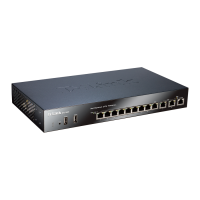• Service: all_services
• Source Interface: l2tp_tunnel
• Source Network: l2tp_pool
• Destination Interface: any
• Destination Network: all-nets
8. Click OK
9.5.3. L2TP/PPTP Server advanced settings
The following L2TP/PPTP server advanced settings are available to the administrator:
L2TP Before Rules
Pass L2TP traffic sent to the NetDefend Firewall directly to the L2TP Server without consulting the
rule set.
Default: Enabled
PPTP Before Rules
Pass PPTP traffic sent to the NetDefend Firewall directly to the PPTP Server without consulting the
rule set.
Default: Enabled
Max PPP Resends
The maximum number of PPP layer resends.
Default: 10
9.5.4. PPTP/L2TP Clients
The PPTP and L2TP protocols are described in the previous section. In addition to being able to act
as a PPTP or L2TP server, NetDefendOS also offers the ability to act as a PPTP or L2TP clients.
This can be useful if PPTP or L2TP is preferred as the VPN protocol instead of IPsec. One
NetDefend Firewall can act as a client and connect to another unit which acts as the server.
Client Setup
PPTP and L2TP shares a common approach to client setup which involves the following settings:
General Parameters
• Name - A symbolic name for the client.
• Interface Type - Specifies if it is a PPTP or L2TP client.
• Remote Endpoint - The IP address of the remote endpoint. Where this is specified as a URL,
the prefix dns: must be precede it.
9.5.3. L2TP/PPTP Server advanced
settings
Chapter 9. VPN
463

